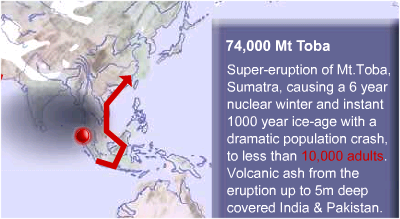Usually neolithic rock art sites like
Bhimbetka,
Karabad,
Shamla Hill, have images of anthropomorphic figures performing
various activities. The rock art site at Kupgal village in Bellary, Karnataka,
has something more fascinating: dolerite boulders which emit musical tones
when struck by granite. The boulders found on top of hills, which were called
Peacock Hill by the British and Hiregudda (Big Hill) by the locals, have
grooves on them and only when those grooves are struck, music is produced.
The rock art tells us a bit about the people who created them. The most common
object depicted in their art is the Zebus or the the domesticated long horned
humped back Indian cattle. The cattle appear in various images, sometimes
alone, sometimes facing each other and sometimes being hunted by stick figures
with bows and arrows. In some images cattle are shown with three horns and
there is also a depiction of a ritual involving the burning of cow dung.
After cattle, the second most popular image is that of the anthropomorphic
ithyphallic figures, depicted having sex, using bows and arrows, raiding
cattle, riding animals and dancing. Besides this there are images of other
animals like elephants, tigers, deers and symbols like ladder and foot prints.
The location of some of the art is on difficult to reach rock formations
located at great heights and it was definitely not
Jehangir
Art Gallery for even the viewers had to take risk insurance. The present
locals perform a ritual called Pitlappa Puja in August and during the ceremony
only a few men climb to the top of the hills. One theory is that the rock art
was done as a part of some ritual related to cattle and fertility which
involved music, like the
Shamans.
Reference:
Rock
art and rock music: Petroglyphs of the south Indian Neolithic,
Ancient
Indians made ‘rock music’

